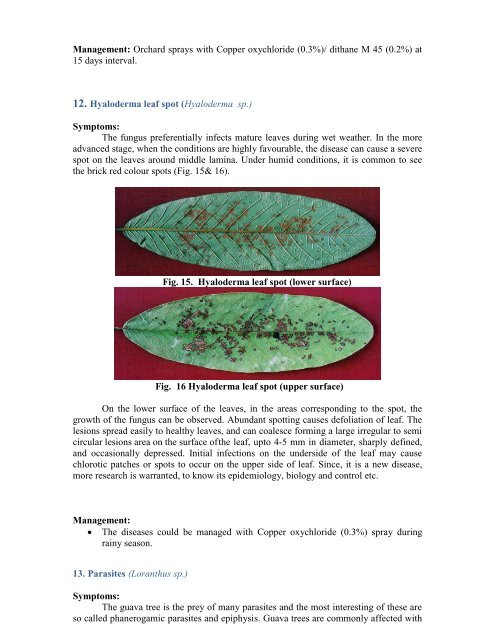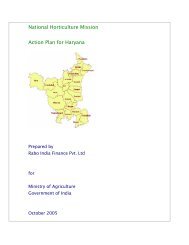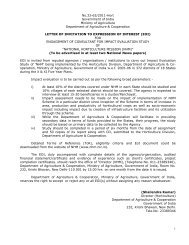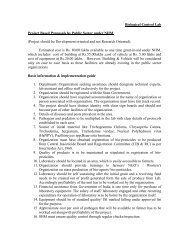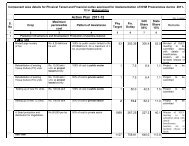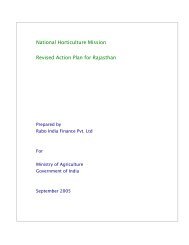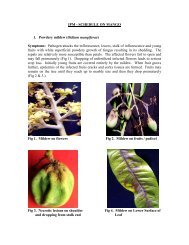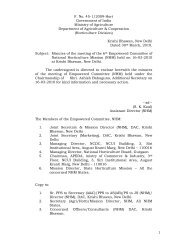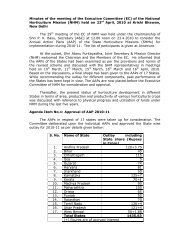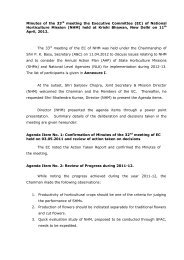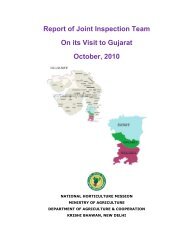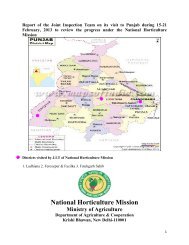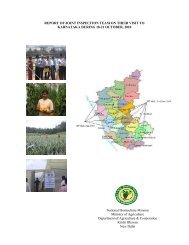Guava - National Horticulture Mission
Guava - National Horticulture Mission
Guava - National Horticulture Mission
You also want an ePaper? Increase the reach of your titles
YUMPU automatically turns print PDFs into web optimized ePapers that Google loves.
Management: Orchard sprays with Copper oxychloride (0.3%)/ dithane M 45 (0.2%) at15 days interval.12. Hyaloderma leaf spot (Hyaloderma sp.)Symptoms:The fungus preferentially infects mature leaves during wet weather. In the moreadvanced stage, when the conditions are highly favourable, the disease can cause a severespot on the leaves around middle lamina. Under humid conditions, it is common to seethe brick red colour spots (Fig. 15& 16).Fig. 15. Hyaloderma leaf spot (lower surface)Fig. 16 Hyaloderma leaf spot (upper surface)On the lower surface of the leaves, in the areas corresponding to the spot, thegrowth of the fungus can be observed. Abundant spotting causes defoliation of leaf. Thelesions spread easily to healthy leaves, and can coalesce forming a large irregular to semicircular lesions area on the surface of the leaf, upto 4-5 mm in diameter, sharply defined,and occasionally depressed. Initial infections on the underside of the leaf may causechlorotic patches or spots to occur on the upper side of leaf. Since, it is a new disease,more research is warranted, to know its epidemiology, biology and control etc.Management: The diseases could be managed with Copper oxychloride (0.3%) spray duringrainy season.13. Parasites (Loranthus sp.)Symptoms:The guava tree is the prey of many parasites and the most interesting of these areso called phanerogamic parasites and epiphysis. <strong>Guava</strong> trees are commonly affected with


